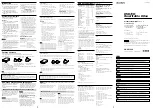
- 59 -
At the last level of the menu hierarchy, data entry screens are often presented. All data are
validated and saved when the “ENTER” key is pressed. If they are out of range, the minimum or
maximum acceptable value will be entered where applicable. Other data fields may require the
use of the “LEFT” of “RIGHT” arrow keys to scroll through possible options. If data is not
“ENTERED”, the previous data will remain unchanged. The “ESC” key will return the user to
the previous menu.
USING PCX DISK FILES
PCX provides two types of disk files,
1. Data File
A data file contains all the data in the positioning drive’s memory in a transportable disk file.
The upload, edit, create, and make options, all work with data files. Data files are always saved
with the file extension of “.PCX” so it is not necessary for the user to specify one. Data files are
stored in binary files and should only be edited by PCX.
2. List File
A list file contains the values found in the PCX setup screens in an ASCII character text file. It
is created from a data file with Make, in the disk file operations. A list file can be used for
printing, word processing, troubleshooting, or as documentation. List files are always saved with
the file extension of “.LST” so it is not necessary for the user to specify one.
Files that are created require a user file name to save the data. If possible, it is recommended
that files be saved in the current directory. When files need to be recalled, PCX displays a list of
files that are found in the current directory. To save to the current directory, simply type in a file
name of eight characters or less. The correct file extension will automatically be appended.
Files can be saved to any directory of any disk drive by specifying a complete file path.
Artisan Technology Group - Quality Instrumentation ... Guaranteed | (888) 88-SOURCE | www.artisantg.com
















































